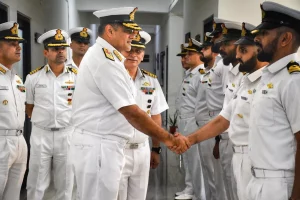Understanding the rich tapestry of India’s history is crucial for aspirants of the National Defence Academy (NDA) and Combined Defence Services (CDS) exams. These competitive exams not only test candidates on contemporary issues but also on their knowledge of India’s cultural and historical legacy. Among the many dynasties that have shaped Indian history, the Guptas, Pallavas, Chalukyas, and Cholas hold significant importance. Their contributions span the realms of politics, culture, art, and architecture, providing a comprehensive understanding of India’s historical development.
The Guptas: The Golden Age of India
The Gupta Empire (circa 320-550 CE) is often referred to as the “Golden Age of India” due to its advancements in various fields. This period saw remarkable achievements in science, mathematics, astronomy, literature, and the arts. Key highlights include:
- Political Stability and Expansion: The Guptas established a large and stable empire, fostering a period of peace and prosperity. Their administrative skills and military prowess enabled them to control vast territories, which is a critical study for understanding ancient Indian polity and governance.
- Cultural Flourishing: The Gupta period was marked by significant contributions to Sanskrit literature and Hindu philosophy. Kalidasa, one of India’s greatest poets and playwrights, flourished during this era. His works, such as “Shakuntala” and “Meghaduta,” are classics of Sanskrit literature.
- Scientific Advancements: This era witnessed major scientific developments. Aryabhata, a renowned mathematician and astronomer, introduced the concept of zero and made significant contributions to trigonometry and algebra. His work, “Aryabhatiya,” remains a cornerstone in the history of mathematics.
- Architectural Innovations: Gupta architecture, exemplified by the rock-cut caves at Ajanta and Ellora, showcases intricate craftsmanship and advances in artistic techniques. The temples built during this period laid the foundation for subsequent architectural styles.
The Pallavas: The Southern Cultural Catalysts
The Pallavas (circa 275-897 CE) were instrumental in shaping the cultural and architectural landscape of southern India. Their contributions include:
- Dravidian Architecture: The Pallavas are credited with pioneering Dravidian architectural styles, particularly the rock-cut temples at Mahabalipuram (Mamallapuram). The Shore Temple and the Pancha Rathas are UNESCO World Heritage Sites, symbolizing the architectural genius of this period.
- Promotion of Art and Literature: The Pallava kings were great patrons of art and literature. The inscriptions and sculptures from their reign provide valuable insights into the socio-cultural milieu of the time.
- Religious Developments: The Pallavas played a key role in the proliferation of Hinduism and the construction of temples, which served as centers of cultural and religious activities.
The Chalukyas: A Blend of Northern and Southern Traditions
The Chalukyas (circa 543-753 CE for the Badami Chalukyas and 973-1190 CE for the Western Chalukyas) contributed significantly to the synthesis of northern and southern cultural traditions in India.
- Architectural Synthesis: The Chalukyas are renowned for their distinctive style of temple architecture, which blends Nagara (northern) and Dravidian (southern) elements. The temples at Badami, Aihole, and Pattadakal are exemplary of this hybrid style.
- Political and Military Achievements: The Chalukyas were adept at maintaining a balance of power in the Deccan region. Understanding their military strategies and administrative systems is crucial for comprehending the dynamics of medieval Indian polity.
- Cultural Patronage: The Chalukyas supported various forms of art, literature, and learning, fostering a vibrant cultural atmosphere. The famous Chalukyan ruler, Pulakeshin II, is noted for his patronage of scholars and artists.
The Cholas: Maritime Prowess and Cultural Grandeur
The Cholas (circa 850-1279 CE) are celebrated for their extensive contributions to Indian culture, administration, and maritime trade.
- Naval Dominance and Trade: The Cholas built a powerful navy, enabling them to establish trade links with Southeast Asia and exert influence over the Indian Ocean. This maritime prowess is a testament to their strategic and economic acumen.
- Architectural Masterpieces: The Chola period is renowned for the construction of grand temples, such as the Brihadeeswarar Temple at Thanjavur, a UNESCO World Heritage Site. These temples are not only religious centers but also hubs of social and cultural activities.
- Administrative Excellence: The Cholas developed a highly organized administrative system, with efficient governance practices that included local self-government in villages. Their inscriptions provide detailed records of land grants, taxation, and social organization, offering valuable lessons in ancient administrative practices.
- Cultural and Artistic Achievements: The Chola dynasty was a golden era for Tamil literature, bronze sculpture, and the fine arts. Their patronage led to the flourishing of classical Tamil literature and the creation of iconic bronze sculptures, such as the Nataraja, which exemplifies the zenith of Indian metallurgical and artistic skills.
Conclusion
For NDA and CDS aspirants, an in-depth understanding of these dynasties is essential not only for the historical and cultural knowledge they offer but also for the insights into ancient Indian administration, military strategies, and socio-economic systems. The legacies of the Guptas, Pallavas, Chalukyas, and Cholas highlight the rich and diverse history of India, serving as a foundation for the nation’s cultural and intellectual heritage. Recognizing their contributions helps aspirants appreciate the historical context of contemporary India and prepares them for their roles as future leaders and defenders of the country.



















